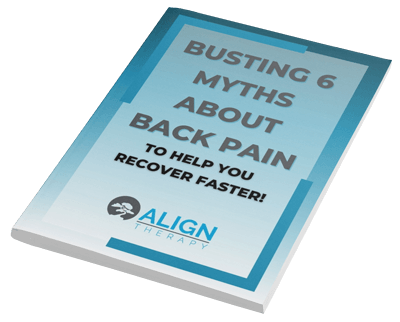Starting your scoliosis treatment with the Schroth Method is an empowering first step toward improving your posture, reducing pain, and preventing curve progression. The real magic, however, happens in the follow-up visits. These ongoing sessions are where progress takes shape, adjustments are made, and you truly learn to integrate the techniques into your everyday life. If you’ve completed your initial assessment and are wondering what comes next, this post will give you a clear picture of what to expect during your follow-up Schroth visits.
The Role of Follow-Up Schroth Visits
The initial evaluation with a Schroth therapist is about building a strong foundation—identifying your specific curve patterns, teaching you the basics of Schroth-specific exercises, and setting realistic goals. Follow-up visits take this groundwork and build upon it, guiding you toward lasting improvements.
Follow-up visits are vital for:
- Consistency: Scoliosis is a condition that evolves over time, and regular therapy ensures you’re staying ahead of any changes.
- Adaptation: As your body becomes stronger and more aligned, your exercises will need to evolve to challenge you in new and better ways.
- Accountability: These visits keep you motivated and on track with your home exercise program, which is the foundation of successful scoliosis management.
What Happens During a Follow-Up Schroth Visit?
Review of Progress
Each session starts with a check-in. Your therapist will ask about your experience with the exercises you’ve been practicing at home:
- Are you finding them manageable or challenging?
- Have you noticed any changes in your posture or pain levels?
- Are there specific exercises you’re struggling with?
This feedback helps your therapist fine-tune your treatment plan. They’ll also observe your posture and movement to assess any physical changes since your last visit.
Refinement of Exercises
Once progress is reviewed, your therapist will guide you through your exercises. This isn’t just a repeat of what you’ve done before—it’s an opportunity to refine your form and ensure you’re getting the maximum benefit.


Proper technique is crucial in the Schroth Method, as each movement is designed to target your specific curve. Your therapist will make hands-on adjustments to help you elongate, breathe into your concave side, and engage the correct muscles.
Advanced Techniques
As you become more comfortable with the basics, follow-up visits will introduce more advanced exercises. This might include:
- Using resistance bands to increase strength.
- Incorporating balance challenges to improve stability.
- Working on asymmetrical movements to address specific imbalances.



These progressions keep the treatment engaging and ensure that you continue to see improvements. If you don’t feel challenged with these exercises, please discuss this with your therapist as they should progress you at each visit.
Check out this video demonstrating what happens at follow-up visits with one of our patients!
How Progress is Measured with the Schroth Method
Objective Measures
Your therapist will track progress through a combination of postural assessments and hands-on evaluations. They may use tools like:
- Surface Topography Imaging: To visually document changes over time.
- Scoliometer measurements: To assess improvements in asymmetry.
- Strength and flexibility testing: To measure improvements in what was found in your initial examination.
Subjective Feedback
Your experience is just as important as the objective data. During follow-ups, your therapist will ask questions like:
- Do you feel more stable or comfortable during daily activities?
- Has your pain level changed?
- Are you noticing an improvement in how you carry yourself?
X-Rays (When Necessary)
If warranted, your therapist may suggest follow-up X-rays to monitor curve stability. These are typically done sparingly, only when they’re needed to guide treatment decisions. Commonly, we use Surface Topography to limit the number of x-rays used.

Common Themes in Follow-Up Schroth Visits
Staying Motivated
Sticking with a scoliosis treatment program can sometimes feel daunting, especially if progress seems slow. Your therapist will be your cheerleader, reminding you that lasting change takes time and consistency. They’ll celebrate small victories with you, such as improved posture, reduced pain, or improvement on measurements!
Addressing New Challenges
Life happens, and your needs may shift between visits. Whether you’re dealing with a new ache, preparing for an upcoming x-ray, or experiencing increased stress related to your curve, your therapist will adjust your exercises to accommodate these changes.
Empowering Self-Management
Ultimately, the goal of Schroth therapy is to equip you with the tools to manage your scoliosis independently. Follow-up visits will reinforce strategies for:
- Maintaining proper posture throughout your day.
- Using breathing techniques to expand the concave side of your curve.
- Integrating exercises seamlessly into your routine, so they feel less like a chore and more like a natural part of life.
The Evolving Nature of Your Schroth Treatment Plan
Scoliosis treatment isn’t static—it’s dynamic and personalized. As you gain strength, improve alignment, and develop better postural awareness, your treatment plan will evolve.
For example:
- Early sessions might focus on elongation and breathing exercises to improve your posture.
- Over time, you’ll progress to strength-based movements that stabilize your spine and help prevent curve progression.
- Eventually, you’ll work on integrating these techniques into functional activities like sitting, standing, and even exercising.
This personalized approach ensures that therapy continues to challenge and benefit you at every stage of your journey.
What to Bring to Your Follow-Up Schroth Visits
- Notes: If you’ve noticed changes in your posture, pain, or mobility, write them down before your appointment. This feedback will help your therapist fine-tune your plan.
- Questions: Don’t hesitate to bring up anything on your mind, whether it’s a question about your exercises or concerns about your curve.
- Your Brace: If you have a brace for scoliosis, make sure to bring it! Your therapist will check the fit and comfort at each visit.
- Your Effort: Show up physically and mentally ready to work! Scoliosis therapy is a partnership between you and your therapist, and your active participation is key to success.
Addressing Concerns About Long-Term Therapy
Time Commitment
Some patients worry about the time required for Schroth therapy. While follow-up visits are important, much of the work happens at home. Think of your therapist as your guide, helping you stay on the right path while you do the daily work of practicing your exercises.
Expectations for Outcomes
It’s natural to want quick results, but scoliosis improvement is a gradual process. Over time, you’ll notice changes like better posture, reduced pain, and greater ease in daily movements. Trust the process and stay consistent—it’s worth the effort.
Wrapping Up
Follow-up visits with a Schroth therapist are where the real transformation happens. They’re your opportunity to refine your skills, stay motivated, and ensure that your treatment changes with your needs.
Every session brings you closer to greater confidence, improved posture, and the ability to manage your scoliosis effectively. By staying committed to your therapy, you’re investing in your long-term health and well-being.
If you are looking for Schroth Method treatment for your scoliosis or kyphosis, click HERE to sign up for a Free Consultation at my clinic where we can talk about how this can help you.
Thanks for reading!
David Butler, Physical Therapist



